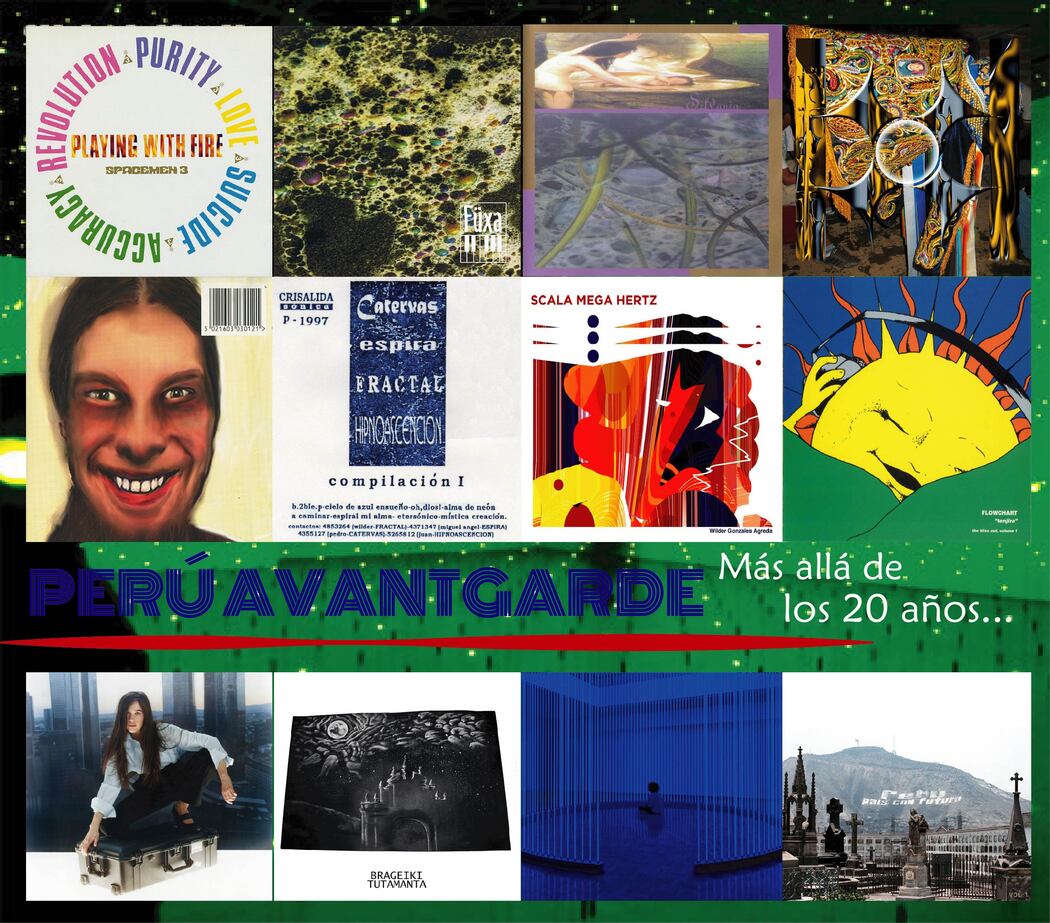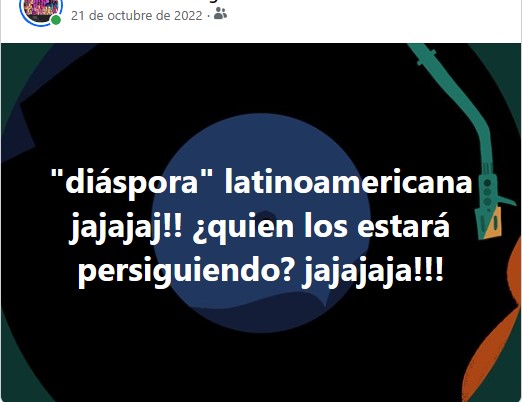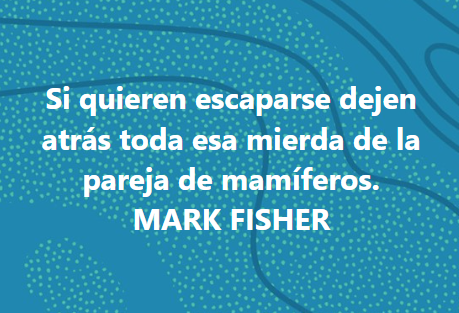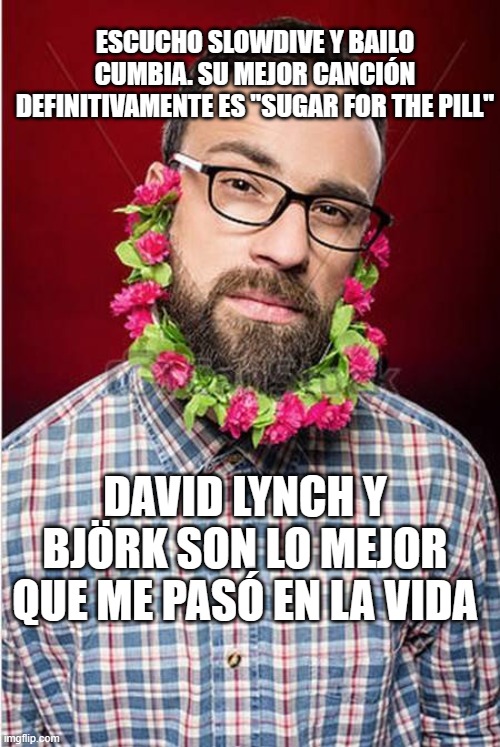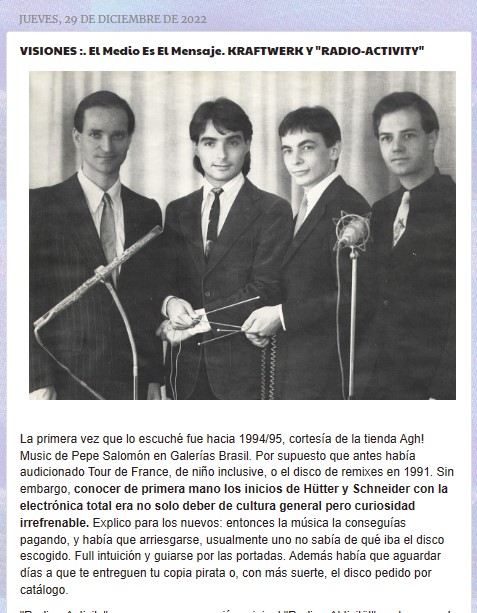Testeado por Alan Cummings.
Extraído de The Wire, Octubre 2008
Makoto Kawabata es el hombre que trabaja más duro en el rock psicodélico japonés subterráneo. Como líder del colectivo Acid Mothers Temple, él es la fuerza impulsora detrás de una docena de grupos con grandes logros y sus filiales, así como el sello AMT. Su grupo más conocido es la unidad psicodélica hippie peripatética Acid Mothers Temple & the Melting Paraiso UFO, cuya imagen cuidadosamente cultivada los define como una versión oriental del espíritu comunal de The Incredible String Band o Gong. Pero el interés de Kawabata en la composición electrónica, la exótica pornografía suave y el folk occitano varía mucho más de lo que sugiere la imagen de la banda de jamming utópica.
Nacido en 1965 en Osaka, Kawabata se impregnó de la composición electrónica y del hard rock occidental desde una edad temprana. Comenzó su primer grupo, Dark Revolutionary Collective, cuando aún estaba en la escuela en 1978, con los miembros haciendo sus propios instrumentos hasta que pudieran comprar los reales. Gran parte de su trabajo de este período se documentó en su propio sello de casetes REP, creado en 1980.
Kawabata llamó la atención de los fanáticos occidentales del rock underground a mediados de los 90 en los muchos grupos dirigidos por el bajista / conceptualista Asahito Nanjo. La densidad de referencias estilísticas en su trabajo de guitarra en grupos como Musica Transonic, Mainliner y Ohkami No Jikan, así como las texturas acústicas que proporcionó para la unidad de drones étnicos Toho Sara, sugirió un talento acaparador para la síntesis y la recontextualización.
Acid Mothers Temple & The Melting Paraiso UFO se formó en 1995, su álbum debut homónimo apareció en PSF Records de Tokio dos años después. Al principio, el grupo decidió viajar fuera de Japón con la mayor frecuencia posible. Un grupo escindido, Acid Mothers Temple & amp; The Cosmic Inferno, se formó en 2005. Un calendario de lanzamientos pesados en múltiples sellos en todo el mundo caracteriza a ambos grupos, con Melting Paraiso UFO que lanzó más de 40 álbumes y Cosmic Inferno una docena. En los últimos años se han visto colaboraciones con destacados miembros supervivientes de la contracultura de los años 70, como Daevid Allen de Gong, Mani Neumeier de Guru Guru y Damo Suzuki de Can.
Además de AMT, Kawabata interpreta y graba en solitario, en un dúo con el guitarrista francés Jean-Francois Pauvros, y con muchas otras unidades ad hoc. Su último proyecto de grabación es un trío con Keiji Haino y el baterista de Ruins Tatsuya Yoshida.
La Rocola se llevó a cabo en una escuela victoriana en desuso en Bermondsey, al sur de Londres, en la víspera de una gira por el Reino Unido por Acid Mothers Temple & The Cosmic Inferno. Una secuela tuvo lugar en la Maison Betaux en el centro de Londres.
KALHEINZ STOCKHAUSEN
"Telemusik"
De Hiroshi Shiotani: Oto No Hajimari Wo Motomete Vol 1 (sound 3) 1966/2001
[Inmediatamente] Fácil, Stockhausen. No te puedo decir el título porque siempre están en alemán. Pero definitivamente es Stockhausen.
Estoy impresionado. Es Telemusik, grabado en el NHK Electronic Music Studio en Tokio en 1966. ¿Cómo lo reconociste tan rápido?
Son las frecuencias. Ya sea que esté escribiendo para la electrónica o la voz o lo que sea, en la música de Stockhausen siempre parece faltar un par de frecuencias, justo por encima del rango medio. La sensación es de que es totalmente diferente a cualquier otra música electrónica. He hablado en el pasado sobre el zumbido en mis oídos que he tenido desde que era niño y cómo solía pensar que se trataba de mensajes transmitidos por un ovni. Cuando escuché a Stockhausen por primera vez en la radio, sonaba exactamente igual que el zumbido: las frecuencias eran prácticamente idénticas. Escuchar ese programa de radio NHK [del canal público japonés] fue un momento importante para mí. Simplemente pasaba composición contemporánea, así que escuchabas material electrónico como Stockhausen y compositores japoneses como Maki Ishii o [Toshiro] Mayuzumi. Comencé a escuchar música contemporánea y rock exactamente a la misma edad. No había ninguna distinción entre ellos en lo que a mí respecta.
¿Todavía te suenan las orejas?
Ha cambiado con los años. Cuando era niño sonaba como una transmisión electrónica de banda corta, ahora suena más como música. Cuanta más música he escuchado, más musical se ha vuelto el sonido en mis oídos. Es como si mis oídos se hubieran vuelto más sensibles y capaces de escuchar los detalles en el sonido. Tal vez cuando era niño solo podía escuchar el diez por ciento, ahora puedo escuchar cerca del 70 por ciento.
ULTRA BIDE
"1979!"
De Dokkiri Record (Hitsuyo Records) 1980
[Escucha atentamente los "Hi speed freaks, listen in" collage intro] No lo sé. ¿Es japonés?
Sí. ¿Puedes identificar el tiempo y el lugar?
No escucho mucha música japonesa. No creo que sea muy reciente, pero aparte de eso, no lo sé.
Es de un grupo de Kyoto llamado Ultra Bide, que formó parte de la escena Kansai No Wave de finales de los 70 con Phew, Inu y Hijokaidan. Empezaste a tocar en vivo al mismo tiempo. ¿Qué tan consciente estabas de esas cosas?
Todavía estaba en la escuela cuando formé mi primer grupo en 1978, por lo que los punks Kansai originales eran cinco o seis años más viejos. Para ser honestos, no nos llevamos bien con ellos en absoluto. No tengo idea de lo que pensaron de nosotros, pero queríamos hacer lo nuestro y nos negamos a aceptar ningún favor de nadie. La terquedad adolescente, supongo. Pero también fue porque nuestra música no era realmente punk o ruido o New Wave, por lo que nadie quería saber. Así que no tuvimos más remedio que hacerlo nosotros mismos.
¿Tocaste en alguna lugar con esos grupos?
Cuando pensamos por primera vez en tocar en vivo, no teníamos idea de cómo hacerlo. Un día vi un anuncio en una revista de rankings de Osaka para un lugar llamado Aun Position que pedía bandas para tocar. Los llamé y accedieron a dejarnos tocar. Nos presentamos e hicimos este ruido caótico, ¡y resultó que era un club de folk [risas]! No importaba, ya que no había nadie en la audiencia, aparte de esta otra banda que tocaba detrás de nosotros, una banda de covers de Whitesnake. Solo estábamos despistados.
THE MONASTERY OF GYÜTÖ
"Tantra Dit De 'Assemblée Secrete'"
De Voice of the Tantra (Ocora) 2000
[Inmediatamente] Es un canto budista esotérico tibetano. Vivo estas cosas. Cuando escuché el canto tibetano por primera vez, fue como música industrial para mí.
¿Podrías elaborar sobre eso?
El ruido y lo industrial se estaban volviendo populares y había escuchado unos pocos discos. Pero luego escuché un disco tibetano con esas voces de bajos increíblemente bajas, el enorme eco natural, las cuernos haciendo drones y los golpes de percusión. La gente hablaba de Throbbin Gristle como extremo, pero para mí solo sonaban como una banda de rock normal con bajo, guitarra y un ritmo regular. Su música nunca invocó las imágenes de la oscuridad y las ruinas en descomposición que se suponía. Pero luego escuché un disco tibetano y, para mí, sonaba exactamente como lo que había imaginado que sería la música industrial. Era oscuro y misterioso, tienes la sensación de que se lanzan peligrosos objetos metálicos y hay una sensación de sobrecogimiento o temor al respecto. Hay algo profundamente extraño en esas bajas frecuencias vocales.
Una vez compusiste una pieza para sacerdotes duddhist japoneses.
Sí, una pieza para 100 sacerdotes de Shingong [una escuela esotérica de budismo japonés], para un gran concierto que celebra el aniversario del nacimiento de su fundador, Kukai. Fui responsable de los elementos de colaboración, así que arreglé algunas partes para percusión y violín, y también toqué la guitarra. El tipo que estaba a cargo de todo el evento era un joven sacerdote de Mount Koya y estaba tocando esta música de la New Age en el sintetizador. Fue realmente agradable de hacer. ¿Saben cómo al final del ritual las voces se acumulan al unísono y entonces tiran los largos rollos de sutra? Mientras hacían eso, yo estaba tocando una guitarra muy pesada [risas]. Toqué deliberadamente algo totalmente diferente durante el ensayo para poder salirme con la mía. Pero los sacerdotes y la audiencia lo odiaron y nunca me volvieron a preguntar.
¿Escuchas mucha música religiosa?
La música religiosa, étnica y electrónica son mis grandes amores. Sin embargo, tiendo a no escuchar mucho de los climas tropicales, solo un poco de marroquí o de Oriente Medio. No me interesa el ritmo, así que no la música de gamelan, ni de Sudamérica ni de Centroamérica; parece que siempre se trata de baile y placer, y para mí suena un poco flojo. Pero la música de lugares de climas más fríos parece tener un borde más áspero. Eso es lo que prefiero escuchar.
¿Qué quieres obtener de la música?
Una hermosa melodía siempre viene primero para mí. Tiene que haber una atracción. Incluso con la música de vanguardia, si no hay belleza en ella no puedo escucharla.
...
GONG
"Mastser Builder"
De Radio Gnome Invisible Vol. 3 - You (Virgin) 1974
[Dentro de un segundo] Gong, "Master Builder". Probablemente solo sea mi tercer álbum favorito de Gong. Pero la introducción a "Master Builder" tiene una atmósfera tan devastadora, con ese zumbido vocal casi tibetano y la interferencia alienígena electrónica. Solía escuchar esa parte una y otra vez.
¿Cómo te topaste con Gong? ¿Tenían mucho perfil en Japón?
Cuando era adolescente me gustaban Deep Purple y Stockhausen, y buscaba constantemente algo que fuera una combinación de ambos. Un día, alguien en la escuela secundaria mencionó a Hawkwind y Gong porque usaban extraños sonidos electrónicos cósmicos en su música. Para ser honesto, Hawkwind era demasiado rockero para mí. Pero cuando escuché a Gong, esperaba algo mucho más difícil, pero de alguna manera su extraña sensación de flexibilidad me dejó una impresión.
¿Cómo llegaste a conocer a Daevid Allen?
Acid Mothers Temple apoyó a Gong en el Royal Festival Hall [de Londres]. Conocí a Daevid en el backstage y hablamos un poco. Parecía que ya sabía de nosotros. Me preguntó si me gustaría cambiar con algunos de sus CD, pero le dije que ya tenía todos los lanzamientos de Gong. Le di algunos CDs de AMT de todos modos. Después de eso, alguien escribió en nuestro panel de mensajes que les encantaría escuchar una colaboración de Acid Mothers Gong. Contesté que estaría encantado de hacerlo si alguien quisiera configurarlo, y por suerte, el manager de Gong vio mi publicación y se la pasó a Daevid. Hubo muchos problemas de programación, pero al final ambos encontramos una fecha y Tsuyama, [Tatsuya] Yoshida y yo tocamos como Acid Mothers Gong en Londres.
Visualmente parece haber una superposición distinta entre AMT y Gong.
Había visto todas esas portadas de Gong e Incredible String Band cuando era chico, y toda la estética hippy de la comunidad con las novias, los niños y las mascotas me parecieron realmente geniales. Así que era mitad estrategia, mitad reflejo de nuestro estilo de vida en ese momento. Pero creo que fue solo visual, nunca pensé que hubiera alguna influencia musical. Cuando salió nuestro primer álbum, todos nos compararon con Hawkwind y Gong, cuando lo que pensé que estaba haciendo era agregar algo a mi propia fusión de Stockhausen y Deep Purple [risas]. Pero las imágenes fueron mi idea, así que solo me tengo a mi para culparme.
...
AFRIRAMPO
"Otokotachitoransu"
De Baka Ga Kita! (Moonlight) 2006
[Escucha toda el track] Absolutamente ni idea.
Es el álbum que Afrirampo grabó con los pigmeos Baka en Camerún.
[Risas] ¡Eso no es justo! ¿Cómo se suponía que iba a sacar eso? No suena como Afrirampo, sus voces ni siquiera están ahí. Si me hubieras tocado la canción título, la habría sacado.
A menudo apoyas a jóvenes bandas japonesas a través de tu sello y blog.
Recientemente ha habido una gran cosecha de bandas jóvenes e interesantes. No sé qué es, pero parece que un germen de creatividad se ha saltado un par de generaciones y de repente hay grandes bandas apareciendo por todos lados. Un nuevo local llamado Helluva Lounge se abrió recientemente en Kobe y parece haber inspirado a muchas bandas nuevas. Es emocionante tocar con estos músicos más jóvenes, ya que su enfoque es totalmente diferente. Mi generación creció obsesionada con la música rock occidental y la contracultura, toda esa frialdad, pesadez y autenticidad. En comparación, todas las bandas de rock japonesas eran solo grises imitadores. La gente habla hoy de Flower Travellin' Band, pero, ¿cuánta gente, honestamente, los elegiría como más originales que Led Zepellin? Podran haber agregado algunos adornos orientales, pero Zeppelin era mucho más fresco. Teníamos tan poca información que siempre tuvimos que usar nuestros amplificadores e imaginar que todos se habían subido a diez. Nunca me di cuenta de que la mayoría de ellos eran solo de repuesto. Me imaginaba que tocaban a un volumen aplastante e intentaba hacer lo mismo. O veía a un guitarrista girando su guitarra e imaginando que tocaban así durante todo su set. Cuando cogí una guitarra, pensé que así era como tenías que tocarla. Nuestra cultura rockera entera comenzó a partir de ese tipo de conceptos erróneos. Pero esos conceptos erróneos y las fantasías que permitieron que existieran casi se han ido ahora. Los niños de hoy crecen en J-pop y casi no escuchan música occidental en absoluto. Tanto de buena como de mala manera, han perdido ese anhelo por otra cosa.
|||||||||||||||||||||||||
|||||||||||||||||
Invisible Jukebox: MAKOTO KAWABATA
Tested by Alan Cummings.
Excerpt from The Wire, October 2008
Makoto Kawabata is the hardest working man in the Japanese psych rock underground. As the leader of the Acid Mothers Temple collective, he's the driving force behind a dozen hyper-achieving groups and their offshoots, as well as the AMT label. His best known group is the peripatetic hippy psych unit Acid Mothers Temple & The Melting Paraiso UFO, whose carefully cultivated image defines them as an Oriental take on the communal ethos of The Incredible String Band or Gong. But Kawabata's interest in electronic composition, soft porn exotica and Occitanian folk ranges far more widely than the utopian jam band image would suggest.
Born in 1965 in Osaka, Kawabata steeped himself in electronic composition and Western hard rock from an early age. He started his first group, Dark Revolutionary Collective, while still at school in 1978, with the members making their own instruments until they could afford to buy real ones. Much of his work from this period was documented on his own REP cassette label, set up in 1980.
Kawabata came to the attention of Western fans of underground rock in the mid-90s in the many groups led by bassist/conceptualist Asahito Nanjo. The density of stylistic references in his guitar work in groups like Musica Transonic, Mainliner and Ohkami No Jikan, as well as the acoustic textures he provided for the ethnic drone unit Toho Sara, suggested a magpie talent for synthesis and recontextualisation.
Acid Mothers Temple & The Melting Paraiso UFO were formed in 1995, their self-titled debut album appearing on Tokyo's PSF Records two years later. Early on the group decided to tour outside Japan as frequently as possible. A splinter group, Acid Mothers Temple & The Cosmic Inferno, was formed in 2005. A heavy release schedule on multiple labels worldwide characterises both groups, with Melting Paraiso UFO having released over 40 albums, and Cosmic Inferno a dozen. Recent years have seen collaborations with prominent surviving members of the 70s counterculture, including Daevid Allen of Gong, Mani Neumeier of Guru Guru, and Damo Suzuki of Can.
In addition to AMT, Kawabata performs and records solo, in a duo with French guitarist Jean-Francois Pauvros, and with multiple other ad-hoc units. His latest recording project is a trio with Keiji Haino and Ruins drummer Tatsuya Yoshida.
The Jukebox took place in a disused Victorian school in Bermondsey, South London, on the eve of a UK tour by Acid Mothers Temple & The Cosmic Inferno. A follow-up took place at Maison Betaux in central London.
KALHEINZ STOCKHAUSEN
"Telemusik"
From Hiroshi Shiotani: Oto No Hajimari Wo Motomete Vol 1 (Sound 3) 1966/2001
[Inmediately] Easy, Stockhausen. I can't tell you the title because they're always in German. But it's definitely Stockhausen.
I'm impressed. It's Telemusik, recorded at the NHK Electronic Music Studio in Tokyo in 1966. How did you recognise it so quickly?
It's the frequencies. Whether he's writing for electronics or vocals or whatever, Stockhausen's music always seems to have a couple of frequencies missing, just above the mid-range. The feel of it is entirely different to any other electronic music. I've talked in the past about the ringing in my ears I've had since I was kid and how I used to think it was messages being broadcasted by a UFO. When I first heard Stockhausen on the radio it sounded exactly like the ringing - the frequencies were virtually identical. Hearing that [Japanese public broadcaster] NHK radio show was an important moment for me. It just played contemporary composition, so you'd get electronic stuff like Stockhausen as well as Japanese composers like Maki Ishii or [Toshiro] Mayuzumi. I started listening to contemporary music and rock at exactly the same age. There wasn't any distinction between them as far as I was concerend.
Do your ears still ring?
It's changed over the years. When I was a child it sounded like a narrow-band electronic transmission, now it sounds more like music. The more music I've listened to, the more musical the sound in my ears has become. It's like my ears have gradually become more sensitive and able to hear the detail in the sound. Maybe when I was child I could only hear ten per cent of it, now I can hear closer to 70 per cent.
ULTRA BIDE
"1979!"
From Dokkiri Record (Hitsuyo Record) 1980
[Listens intently to the "Hi speed freaks, listen in" collage intro] I don't know this. Is it Japanese?
Yes. Can you identify the time and place?
I don't listen to much Japanese music. I don't think it's very recent, but other than that, I don't know.
It's by a Kyoto group called Ultra Bide, who were part of the Kansai No Wave scene from the late 70s with Phew, Inu and Hijokaidan. You started playing live around the same time. How aware were you of that stuff?
I was still at school when I formed my first group in 1978, so those original Kansai punks were all five or six years older. To be honest, we didn't get on well with them at all. I have no idea what they thought of us, but we wanted to do our own thing and refused to accept any favours from anyone. Teenage stubbornness, I suppose. But it was also because our music wasn't really punk or noise or New Wave, so no one wanted to know. So we had no choice but do it ourselves.
Did you play on any bills with thouse groups?
When we first thought about playing live, we had no idea how to go about it. One day I saw and ad in an Osaka listings magazine for a venue called Aun Position asking for bands to play. I called them up and they agreed to let us play. We turned up and played this set of chaotic noise - and it turned out that if was a folk club [laughs]! It didn't matter though as there was no one in the audience, apart from this othe band who were playing after us, a Whitesnake covers band. We were just clueless.
THE MONASTERY OF GYÜTÖ
"Tantra Dit De 'Assemblée Secrete'"
From Voice of The Tantra (Ocora) 2000
[Inmediately] It's Tibetan esoteric Buddhist chant. I live this stuff. When I first heard Tibetan chant, it was like Industrial music for me.
Could you elaborate on that?
Noise and industrial was just getting popular and I'd listened to a fair few records. But then I heard a Tibetan record with those amazingly low bass voices, the huge natural echo, the horns droning away and the barrages of percussion. People talked about Throbbin Gristle as extreme, but to me they just sounded like a regular rock band with bass, guitar and a regular beat. Their music never invoked the images of darkness and decaying ruins that it was supposed to. But then I heard a Tibetan record and, to me, it sounded exactly like what I had imagined Industrial music to be. It was dark and mysterious, you get a sense of dangerous metal objects being thrown around, and there's a sense of awe or fear about it. There's something deeply strange about those low vocal frequencies.
You once composed a piece for Japanese Duddhist priests.
Yeah, a piece for 100 Shingong [an esoteric school of Japanese Buddhism] priests, for a big concert celebrating the anniversary of the birth of their founder, Kukai. I was responsible for the collaborative elements, so I arranged some parts for percussion and violin, and I played guitar myself. The guy who was in charge of the whole event was a young priest from Mount Koya and he was playing this New Age music stuff on synthesizer. It was really enjoyable to do. You know how at the end of the ritual the voices build up in unison and then the throw out the long sutra scrolls? While they were doing that I was playing some really heavy fuzz guitar [laughs]. I'd deliberately played something totally different during rehearsal so I could get away with it. But the priests and the audience hated it and I never got asked back.
Do you listen to a lot of religious music?
Religious, ethnic and electronic music are my great loves. I tend not to listen to much from tropical climates, though, just a little Moroccan or Middle Eastern stuff. I'm not that interested in rhythm, so no gamelan, or South or Central American music - it always seem to be about dance and pleasure, and to me it sounds somewhat slack. But music from places from colder climates seems to have a harsher edge. That's what I prefer to listen to.
What do you want to get out of music?
A beautiful melody always comes first to me. There has to be an attraction. Even with avant garde music, if there's no beauty in it I can´t listen to it.
...
GONG
"Master Builder"
From Radio Gnome Invisible Vol 3 - You (Virgin) 1974
[Within one second] Gong, "Master Builder". You is probably only my third favourite Gong album. But the intro to "Master Builder" has such a devastantingly weird atmosphere , with that low almost Tibetan vocal drone and the electronic alien interference. I used to listen to just that part over and over again.
How did you first come across Gong? Did they have much of a profile in Japan?
As a teenager I was into Deep Purple and Stockhausen, and I was constantly looking for something that would be a combination of them both. One day someone in high school mentioned Hawkwind and Gong because they used weird cosmic electronic sounds in their music. To be honest, Hawkwind were a bit too straight rock'n'roll for me. But when I heard Gong, I'd been expecting something a lot harder, but somehow their strange floppiness left an impression on me.
How did you come to meet Daevid Allen?
Acid Mothers Temple supported Gong at [London's] Royal Festival Hall. I met Daevid backstage and we talked a bit. He seemed to already know about us. He asked me if I'd like to trade for some of his CDs, but I told him that I already had all the Gong releases. I gave him some AMT CDs anyway. After that someone wrote on our message board that they'd love to hear and Acid Mothers Gong collaboration. I replied that I'd be delighted to do it if someone wanted to set it up, and by change Gong's manager saw my post and passed it on to Daevid. There were a lot of scheduling problems, but eventually we both found a date and Tsuyama, [Tatsuya] Yoshida and I played as Acid Mothers Gong in London.
Visually there seems to be a distinct overlap between AMT and Gong.
I'd seen all those Gong and Incredible String Band covers when I was a kid, and that whole hippy commune aesthetic with the girlfriends and kids and pets looked really cool to me. So it was half strategy, half a reflection of our lifestyle at the time. But I think it was just visual, I never thought that there was any musical influence. When our first album came out everyone compared us to Hawkwind and Gong - when what I thought I was doing was adding a little something to my own fusion of Stockhausen and Deep Purple [laughs]. But the visuals were my idea, so I only have myself to blame.
...
AFRIRAMPO
"Otokotachitoransu"
From Baka Ga Kita! (Moonlight) 2006
[Listens to the whole track] Absolutely no idea.
It's the album Afrirampo recorded with the Baka pygmies in Cameroon.
[Laughs] That's not fair! How was I supposed to get that? It doesn't sound anything like Afrirampo, their voices aren't even on it. If you'd played me the title track I would have got it.
You often support young Japanese bands through your label and blog.
Recently there's been a bumper crop of young, interesting bands. I dont' know what it is, but it feels like a germ of creativity has skipped a couple of generations and suddenly there are great bands popping up all over the place. A new venue called Helluva Lounge recently opened in Kobe and that seems to have inspired a lot of new bands. It's exciting to play with these younger musicians, as their approach is totally different. My generation grew up obsessed with Western rock music and the counterculture, all that coolness and heaviness and authenticity. In comparison all the Japanese rock bands were just leaden imitators. People talk about Flower Travellin' Band today, but how many people would honestly choose them as being more original than Led Zepellin? They might have added a few Oriental flourishes, but Zeppelin were far cooler. We had so little information that we always had to use our amps and imagine that they were all turned up to ten. I never realised that most of them were just spares. I imagined that they played at crushing volume and I'd try to do the same. Or I'd see some guitarist whirling their guitar around and imagine that they played like that through their whole set. When I picked up a guitar I thought that was how you had to play it. Our whole rock culture began from those kinds of misconceptions. But those misconceptions and the fantasies they allowed to exist have almost all gone now. Kids today grow up on J-pop and hardly listen to any Western music at all. In both a good and bad way, they've lost that yearning for something other.
